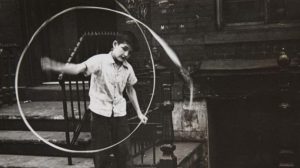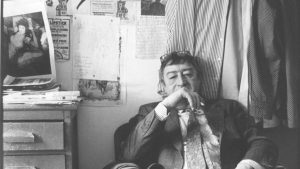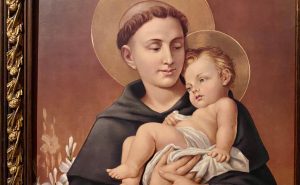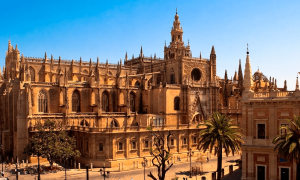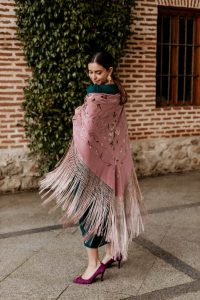
Passion of the South: the Flamenco Forms
The Setting
The plaza of a southern Spanish pueblo, 1.30am, July maybe August. The temperature has finally subsided to comfortable levels. The crowd gossips animatedly. Women fan themselves. Bottles clink on glass. A loud laugh peals out from a bar door…
On a makeshift stage in a corner of the square, a seated guitarist begins to play… a run, a ripple, an eddy, a moody shuffle. The percussion section behind him, three pairs of syncopated hands, joins in. One member lets out a shout of excitement. The crowd lends an ear.
The singer, seated near the guitarist, raises her head. She waits, six, seven seconds, rocking gently to the underlying rhythm. She emits a blood-curdling, quavering shriek. The crowd lends both ears.
If she has the spirit — the spirit of the song and the spirit to communicate it to the crowd — they will stay riveted to their spots until she finishes. If she hasn’t quite got it, the chatter will slowly start up again and gradually the crowd will thin.
The Forms
Flamenco is a trinity of arts — song, dance and music — that first took recognisable form among gitanos (Roma people) in Andalucia’s lower Guadalquivir valley in the late 18th and early 19th centuries. Its remoter origins may have included Muslim music and verses from medieval Spain, possibly the Byzantine chant sung long ago in Visigothic churches, and songs brought to Spain in the Middle Ages by the Gitanos themselves. Much flamenco is undoubtedly reminiscent of song and dance from India, where the gitanos supposedly originated.
The earliest flamenco was cante jondo (deep song), a tortured lament that grew from the experience of the marginalised gitanos, pushed to the periphery of Spanish society. jondura (depth, profoundness) is still the essence of flamenco, and some of the early jondo forms are still sung — notably the martinete, whose only accompaniment is the sound of a hammer striking an anvil, as in the smithies where many Gitanos worked.
A flamenco singer is known as a cantaor (male) or cantaora (female); a dancer is a bailaor/a. Most of the songs and dances are performed to the guitar of the tocaor/a. Flamenco’s scales and rhythms can be difficult for the average beginner to tune in to, but it’s hard to remain unmoved by its passionate intensity. Technically speaking, flamenco differs from most Western music by using the Phrygian mode, in which the interval between the first and second notes of an eight-note scale is a semitone. In conventional Western music the interval is a whole tone. Spaniards, especially Andalucians, have always loved dancing, and it was only natural that dance (baile in flamenco contexts) should soon accompany song.
Traditional costumes:
For women, the Shawl, fan and long, frilly bata de cola dress; for men, flat Cordoban hats and tight black trousers — date from Andalucian fashions in the late 19th century, when flamenco first took to public stages. There are several main song types (palos). The siguiriya, an expres-sion of intense despair about loss or death, is the biggest test of a singer’s ability. It’s thought to have originated in Jerez de la Frontera, one of the three key cities of flamenco’s lower Guadalquivir heartland. The solea, marginally less anguished, probably came from the Triana district of Seville, for centuries a gitano quarter. The livelier alegria is a contribution from the third city, Cadiz. Jerez is also the home of the buleria, the fastest, most upbeat type of song. Relatively lighter forms include the tango, originally from Cadiz, and its derivatives the rumba, guajira and colombiana, all with Latin American influences.
The home of the fandango is Huelva, but other areas also have varieties of fandango — such as Malaga’s malagueña and Granada’s granaina. Almeria’s taranta is not dissimilar. Coplas (flamenco songs) are made up of short, rhyming bursts called tercios; the underlying rhythm is called the compas. The highly popular sevillana dance, learnt by girls all over the country, is not flamenco at all. With high, twirling arm movements, and consisting of four parts each coming to an abrupt halt, the sevillana is probably an Andalucian version of a Castilian folk dance, the seguidilla.
Birth of the Guitar:
The guitar originated when the 9th-century Cordoba court musician Ziryab added a fifth string to the Arab lute. Around the 1790s a sixth string was added, probably by a Cadiz guitar-maker called Pages. In the 1870s Antonio de Torres of Almeria brought the guitar to its modern shape by enlarging its two bulges and placing the bridge centrally over the lower one to give the instrument its carrying power. Toque (literally touch, this is guitar playing) for a long time functioned solely as accompaniment to singing and dance. Percussion in flamenco is provided by stamping or tapping feet, clapping hands and sometimes castanets.

Passion of the South: the Flamenco Forms
The Setting
The plaza of a southern Spanish pueblo, 1.30am, July maybe August. The temperature has finally subsided to comfortable levels. The crowd gossips animatedly. Women fan themselves. Bottles clink on glass. A loud laugh peals out from a bar door…
On a makeshift stage in a corner of the square, a seated guitarist begins to play… a run, a ripple, an eddy, a moody shuffle. The percussion section behind him, three pairs of syncopated hands, joins in. One member lets out a shout of excitement. The crowd lends an ear.
The singer, seated near the guitarist, raises her head. She waits, six, seven seconds, rocking gently to the underlying rhythm. She emits a blood-curdling, quavering shriek. The crowd lends both ears.
If she has the spirit — the spirit of the song and the spirit to communicate it to the crowd — they will stay riveted to their spots until she finishes. If she hasn’t quite got it, the chatter will slowly start up again and gradually the crowd will thin.
The Forms
Flamenco is a trinity of arts — song, dance and music — that first took recognisable form among gitanos (Roma people) in Andalucia’s lower Guadalquivir valley in the late 18th and early 19th centuries. Its remoter origins may have included Muslim music and verses from medieval Spain, possibly the Byzantine chant sung long ago in Visigothic churches, and songs brought to Spain in the Middle Ages by the Gitanos themselves. Much flamenco is undoubtedly reminiscent of song and dance from India, where the gitanos supposedly originated.
The earliest flamenco was cante jondo (deep song), a tortured lament that grew from the experience of the marginalised gitanos, pushed to the periphery of Spanish society. jondura (depth, profoundness) is still the essence of flamenco, and some of the early jondo forms are still sung — notably the martinete, whose only accompaniment is the sound of a hammer striking an anvil, as in the smithies where many Gitanos worked.
A flamenco singer is known as a cantaor (male) or cantaora (female); a dancer is a bailaor/a. Most of the songs and dances are performed to the guitar of the tocaor/a. Flamenco’s scales and rhythms can be difficult for the average beginner to tune in to, but it’s hard to remain unmoved by its passionate intensity. Technically speaking, flamenco differs from most Western music by using the Phrygian mode, in which the interval between the first and second notes of an eight-note scale is a semitone. In conventional Western music the interval is a whole tone. Spaniards, especially Andalucians, have always loved dancing, and it was only natural that dance (baile in flamenco contexts) should soon accompany song.
Traditional costumes:
For women, the Shawl, fan and long, frilly bata de cola dress; for men, flat Cordoban hats and tight black trousers — date from Andalucian fashions in the late 19th century, when flamenco first took to public stages. There are several main song types (palos). The siguiriya, an expres-sion of intense despair about loss or death, is the biggest test of a singer’s ability. It’s thought to have originated in Jerez de la Frontera, one of the three key cities of flamenco’s lower Guadalquivir heartland. The solea, marginally less anguished, probably came from the Triana district of Seville, for centuries a gitano quarter. The livelier alegria is a contribution from the third city, Cadiz. Jerez is also the home of the buleria, the fastest, most upbeat type of song. Relatively lighter forms include the tango, originally from Cadiz, and its derivatives the rumba, guajira and colombiana, all with Latin American influences.
The home of the fandango is Huelva, but other areas also have varieties of fandango — such as Malaga’s malagueña and Granada’s granaina. Almeria’s taranta is not dissimilar. Coplas (flamenco songs) are made up of short, rhyming bursts called tercios; the underlying rhythm is called the compas. The highly popular sevillana dance, learnt by girls all over the country, is not flamenco at all. With high, twirling arm movements, and consisting of four parts each coming to an abrupt halt, the sevillana is probably an Andalucian version of a Castilian folk dance, the seguidilla.
Birth of the Guitar:
The guitar originated when the 9th-century Cordoba court musician Ziryab added a fifth string to the Arab lute. Around the 1790s a sixth string was added, probably by a Cadiz guitar-maker called Pages. In the 1870s Antonio de Torres of Almeria brought the guitar to its modern shape by enlarging its two bulges and placing the bridge centrally over the lower one to give the instrument its carrying power. Toque (literally touch, this is guitar playing) for a long time functioned solely as accompaniment to singing and dance. Percussion in flamenco is provided by stamping or tapping feet, clapping hands and sometimes castanets.

